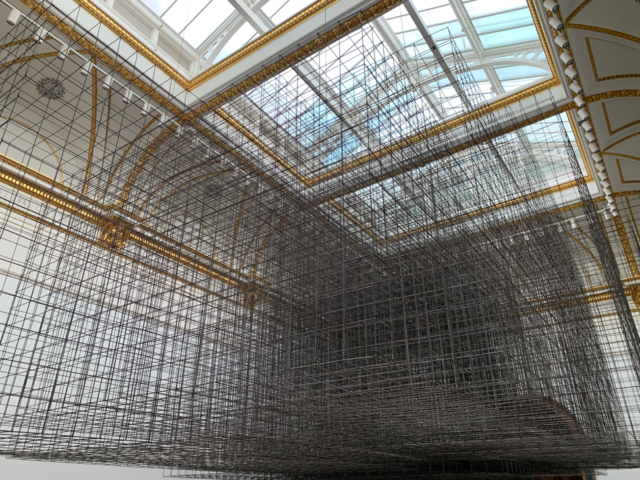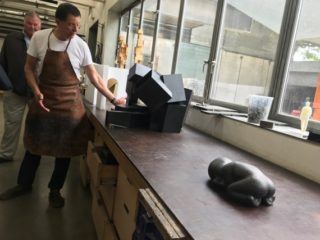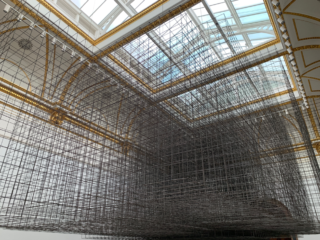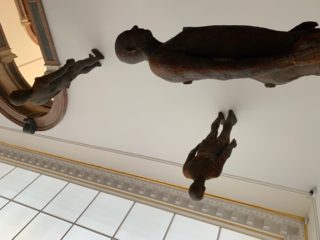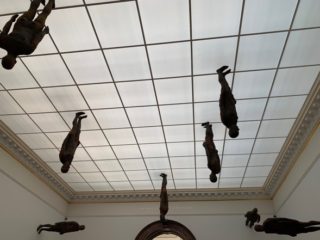Last summer, I was lucky enough to be invited to English artist Antony Gormley’s studio in London. Gormley is a sculptor most well-known for his work creating pieces that represent the human body. His studio is a sprawling space in central London, just north of Kings Cross tube station, with indoor and outdoor spaces. The rooms are filled with sketches, photographs of sketches, and sculptures. When I was there, various assistants also filled the studio, helping Gormley create and plan one of the most important exhibitions in London. Visiting Gormley’s studio at any time would be a delight, but it was especially intriguing for me to visit over the summer as he was preparing for this major exhibition which opened at London’s Royal Academy of Arts in September 2019. The studio visit was fascinating and, in terms of the artist himself, Gormley is the humblest and loveliest man despite his fame and success.
I have always followed and admired Gormley’s work. After this studio visit I read each review and press release about the exhibition, anxiously awaiting fall break when I knew I would see the exhibition in London. When I finally made it there last week, the energy surrounding the exhibition was palpable upon entering the Royal Academy. Almost two months after the opening, hundreds of visitors still scurried around the large galleries, taking pictures, and even climbing through some of Gormley’s bigger instillations.
Another gallery was filled with Gormley’s most famous style of sculpture, representations of human form. At Davidson, we are lucky enough to have a signature work of the artist’s outside of the library, so if you haven’t seen it yet, be sure to take a look! These sculptures are easily recognizable, usually standing alone in gallery and museum exhibitions. But Gormley (along with curators Martin Caiger-Smith and Sara Lea) did something different in this exhibition by putting multiple sculptures in the same room. This allows the pieces – some hanging from the ceiling and jutting out from the walls – to work together in interrupting the viewers path perfectly. The gallery itself becomes more of an installation if one thinks about each piece working together to create the whole of the room. On the other hand, each piece is its own and demands personal attention as the viewer walks through the gallery analyzing one work and making sure not to bump into another.
The Royal Academy is over 250 years old, as shown by the traditional architectural style of the building. One might be skeptical of setting Gormley’s modern and minimalistic works against a much more ornate background, but the result is phenomenal. Juxtaposing Gormley’s modern works with an antiquated and rich background creates an intricate and beautiful combination. The contrast further highlights the artist’s talent as a sculptor and the versatility of his work. The old and the new come together, and expressions of beauty throughout centuries coexist.
The arrangement of the exhibition is also interesting, since Gormley has always been interested in how the human body interacts with shelters and the spaces we occupy. Ironically, the exhibition sprawls throughout five large galleries and is contained in ample space. I couldn’t wait to see the exhibition and it is safe to say the show exceeded my expectations. In fact, I plan to go back and see the exhibition again over Thanksgiving. If you find yourself in London between now and second December 2019, I couldn’t recommend a better way to see English art!

